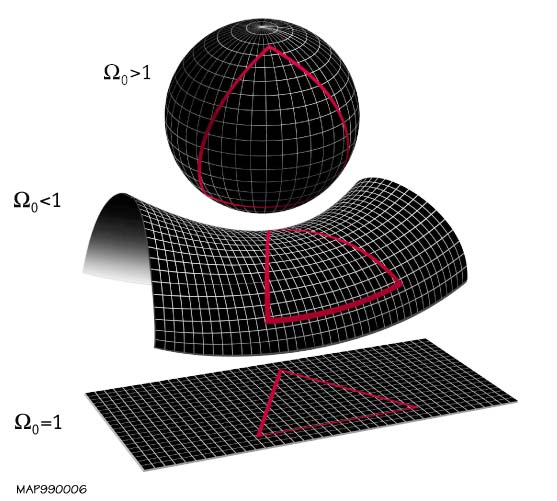
General relativity describes how spacetime is curved and bent by mass and energy (gravity). The topology or geometry of the universe includes both local geometry in the observable universe and global geometry. Cosmologists often work with a given space-like slice of spacetime called the comoving coordinates. The section of spacetime which can be observed is the backward light cone, which delimits the cosmological horizon. The cosmological horizon (also called the particle horizon or the light horizon) is the maximum distance from which particles can have traveled to the observer in the age of the universe. This horizon represents the boundary between the observable and the unobservable regions of the universe. The existence, properties, and significance of a cosmological horizon depend on the particular cosmological model.
An important parameter determining the future evolution of the universe theory is the density parameter, Omega (Ω), defined as the average matter density of the universe divided by a critical value of that density. This selects one of three possible geometries depending on whether Ω is equal to, less than, or greater than 1. These are called, respectively, the flat, open and closed universes.
No comments:
Post a Comment